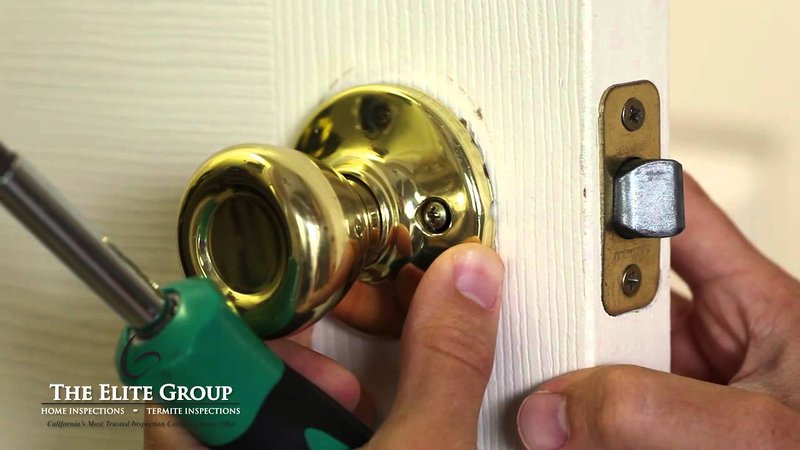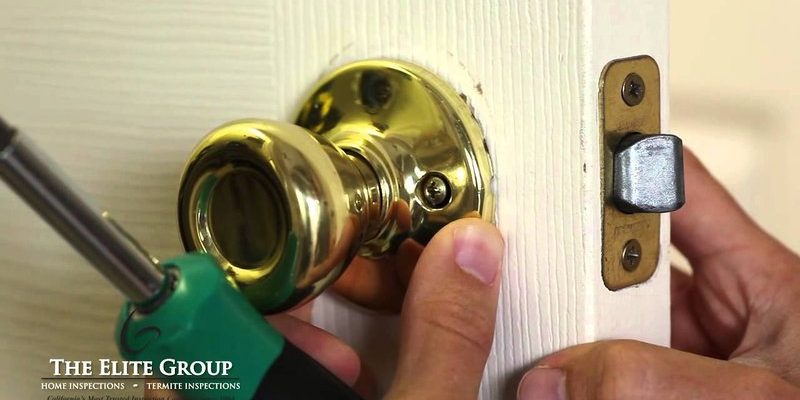
Door knob latches work like the gatekeepers to your space, keeping intruders out while letting you in. When they don’t function properly, it feels like a little piece of your home is misbehaving. Whether you have a basic knob, a deadbolt, or a fancy electronic version, the principles are similar. So, let’s dive into the common issues that can cause a latch to get stuck and how to troubleshoot them.
Understanding How a Door Knob Latch Works
Before we troubleshoot, it helps to know what’s going on inside that door knob. A door knob latch is made up of several parts: the knob itself, the latch bolt, and the springs within. When you turn the knob, it engages the latch bolt, which slides into the door frame. Picture a tiny sliding door that’s supposed to open and close seamlessly, letting you in and out without a hitch.
If you think about it, this mechanism is pretty basic but delicate. Just like a well-oiled machine, if one part isn’t functioning properly, the whole system can fail. It’s essential to understand that factors like dirt, rust, or wear and tear can all contribute to a latch not receding fully.
Common Causes of Latch Malfunction
Now, let’s get into the nitty-gritty. There are several reasons your door knob latch might not be receding fully. Here are some of the most common culprits:
- Dirt and Debris: Over time, dust and grime can accumulate in and around the latch. This buildup can interfere with the mechanism, preventing it from moving smoothly.
- Misalignment: If the door isn’t properly aligned with the door frame, the latch bolt may not line up correctly, making it hard for it to retract fully.
- Mechanical Issues: Springs can wear out or break, leading to failures in the latch mechanism. This is often a gradual process but can be quite annoying when it happens.
These issues can crop up unexpectedly, leaving you scratching your head. But don’t worry; it’s often easy to fix if you know where to start.
How to Diagnose the Problem
Diagnosing a latch issue starts with a little bit of observation. Here’s a simple way to check what might be going wrong:
1. Inspect the Door and Frame:
Examine the door and its frame for any noticeable gaps or misalignments. If the door seems off-kilter, you might need to adjust the hinges.
2. Test the Knob:
Turn the knob several times to see if you can pinpoint when it gets stuck. If it’s sticky, you might have dirt trapped inside.
3. Check the Latch Bolt:
Look at the latch bolt while someone turns the knob. If it doesn’t retract completely, that could indicate a mechanical failure.
Each of these steps can help you pinpoint the exact problem, making it easier to find a solution that works.
Cleaning the Latch Mechanism
If dirt and debris are the issue, cleaning the latch might do the trick. Here’s a straightforward method to get it shining again:
1. Remove the Knob:
Unscrew the door knob from the door. Most knobs have screws hidden under the faceplate or on the side.
2. Clean the Mechanism:
Using a soft cloth, wipe down the latch bolt and the internal mechanism. If you notice tough grime, a little rubbing alcohol can help.
3. Lubricate:
After cleaning, apply a light lubricant like silicone spray or even a bit of graphite powder. Avoid oil-based lubricants as they can attract more dirt.
Cleaning not only helps the latch function better but also extends its lifespan—kind of like giving your door knob a spa day!
Aligning the Door and Frame
If misalignment is the issue, you may need to make some adjustments to the door. Here’s how to realign it:
1. Tighten Hinges:
Use a screwdriver to make sure the hinges are tight. Sometimes, they can get loose over time, causing the door to sag.
2. Adjust the Strike Plate:
If the latch bolt isn’t engaging properly with the strike plate, you might need to reposition it. Loosen the screws, adjust the plate slightly, and tighten again.
3. Check for Warping:
If your door is warped due to humidity or temperature changes, consider replacing it. Sometimes, it’s not a quick fix, but it’s better than dealing with a sticky latch forever.
These adjustments can often solve the problem without needing to replace the whole knob or latch.
Considering Mechanical Issues
If cleaning and alignment don’t solve the problem, it might be time to consider mechanical issues. Here’s what you can do:
1. Inspect the Springs:
Carefully look at the springs inside the knob. If they’re broken or worn out, they won’t provide the necessary tension to retract the latch.
2. Replace the Latch:
If the internal components seem damaged, you might need to replace the latch mechanism altogether. Many hardware stores offer replacement kits that come with instructions.
3. Consult a Professional:
If you’re not comfortable handling these repairs, reaching out to a handyman can be a wise choice. Sometimes it’s better to let someone experienced handle intricate repairs.
Taking these steps can save you time and frustration, ensuring your door knob functions smoothly.
Prevention Tips to Avoid Future Issues
Once you’ve fixed the door latch, you might want to think about how to prevent future problems. Here are some helpful tips:
- Regular Maintenance: Make a habit of cleaning and lubricating your door knobs every six months. A little effort goes a long way.
- Check for Alignment: Periodically check if the door is still aligned properly, especially if you notice any changes in how it shuts.
- Monitor Humidity: If you live in a humid area, consider using a dehumidifier to prevent warping.
By implementing these simple practices, you can keep your door knobs and latches functioning well for years to come.
Troubleshooting a door knob latch that isn’t receding fully may seem daunting at first, but it’s often easier than you think. By understanding the mechanics behind your door knob and taking a step-by-step approach, you can diagnose and fix the issue without calling in a professional. Whether it’s cleaning, realigning, or replacing a component, you’ve got the tools to tackle it.
Remember, door knobs are the unsung heroes of your home, quietly working to keep you safe and secure. So, give them a little love, and they’ll serve you well!
